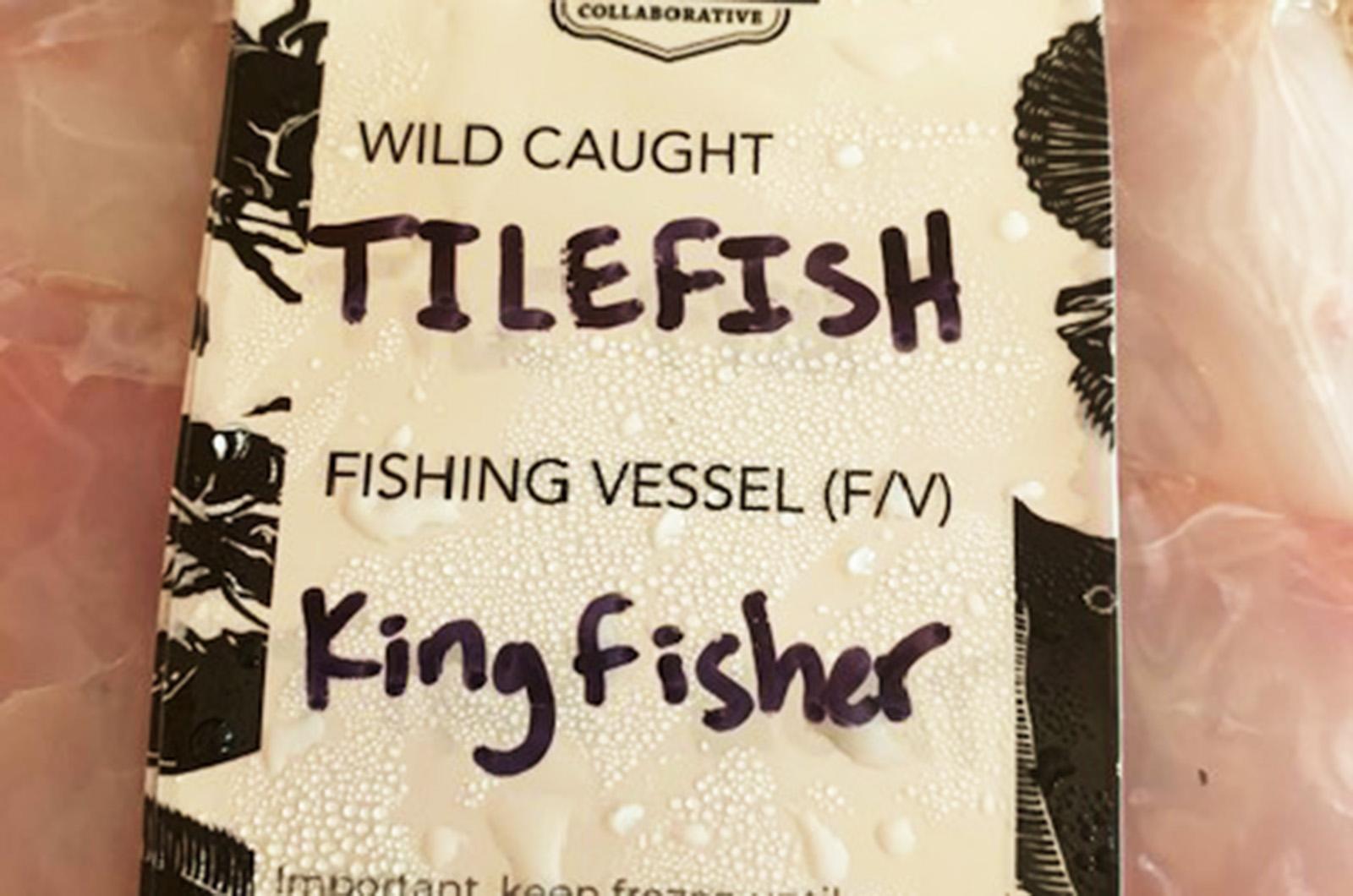If you are what you eat, I might be a golden tilefish.
It is not clear whether this is a good thing or not. There is not a lot of information out there on this fish, though it did capture the attention of a pair of scientists and recently ended up on my dinner table.
Golden tilefish was named in the late 1800s by a pair of fishy friends. Nineteenth-century scientists George Brown Goode and Tarleton Hoffman Bean found their bond over a passion for poisson. These American ichthyologists wrote 39 papers together and documented many species in their studies of these swimmers.
Their ultimate accomplishment was the publication of the laboriously-titled Oceanic Ichthyology, A Treatise on the Deep-Sea and Pelagic Fishes of the World, Based Chiefly upon the Collections Made by the Steamers Blake, Albatross, and Fish Hawk in the Northwestern Atlantic.
For their work, these men have scientific genuses named for them. Mr. Goode was honored with a genus of splitfins called Goodea and Mr. Bean’s legacy Tarletonbeania describes a genus of lanternfish. They also were also revered with at least 17 specific species named for them.
Like these men, my interest is scientific, but also culinary. My encounter with golden tilefish is thanks to the Martha’s Vineyard Fishermen’s Preservation Trust. Their community-supported fishery (CSF) program is to seafood lovers what a community-supported agriculture (CSA) program is to vegetable devotees.
A CSF share gives the participant access to locally-caught fresh seafood, supports local fishers and reduces the environmental impacts of the traditional seafood industry. The MV Fishermen’s Preservation Trust website explains that the program “reduces the environmental impacts of seafood production, distribution, and consumption, reducing the seafood carbon footprint as much as 100 times that of conventional distribution.”
A win-win and who can resist local eats?
The golden tilefish or northern tilefish is also called the clown of the sea due to its iridescent coloring. It came in my CSF share and was my first meeting with this fish that was caught by the fishing vessel Kingfisher, likely on the edge of the continental shelf which is where this species hangs out. As bottom dwellers, tilefish feed mainly on invertebrates, including snails, crabs, worms, sea urchins, sea cucumbers and some small fish. These prey species give tilefish flesh a very sweet taste.
Nothing is more local than tilefish. The first specimen identified by Mr. Goode and Mr. Bean was found 80 miles southeast of Noman’s Land. Interestingly, tilefish almost went extinct when a massive mortality occurred. In 1882, more than one and a half billion dead tilefish were observed floating on the ocean. The cause was believed to be the flooding of the bottom where these fish live by cold water.
Luckily, they started rebounding in 1892 when eight fish were taken off of Martha’s Vineyard. The next year, 53 were caught and the population has rebounded. Today this fishery is sustainable with minimal habitat impacts and bycatch.
With the history and state of the fishery, run — or swim — to the fishermen’s preservation trust website and join the community-supported fishery so you can eat to support local fisheries and enjoy the best of Island waters. No matter what you get, you can be assured that it will be a good catch!
Suzan Bellincampi is Islands director for Felix Neck Wildlife Sanctuary in Edgartown and the Nantucket Wildlife Sanctuaries. She is also the author of Martha’s Vineyard: A Field Guide to Island Nature and The Nature of Martha’s Vineyard.




Comments
Comment policy »